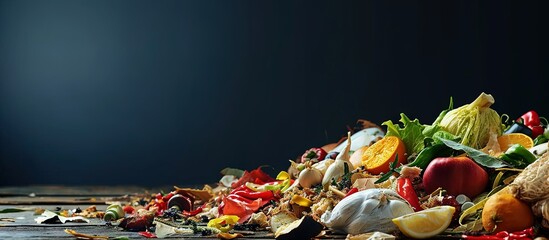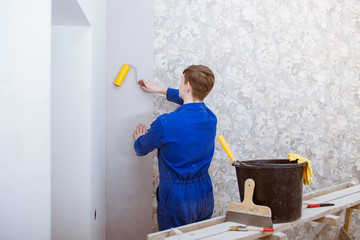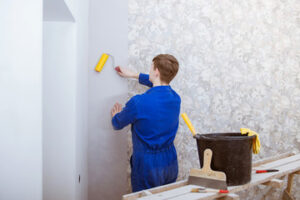If your municipality offers green waste collection, you will have to separate food scraps and yard waste from your regular garbage. This waste is typically transported, mulched, and composted by your local council.
Green waste is biodegradable, unlike non-biodegradable waste which sits in landfills and causes pollution. It includes grass clippings, leaves, weeds, and branches. Green waste collection is also done by Rubbish Removal Mandurah WA companies.
 Recycling
Recycling
Recycling is the process of converting waste materials into new materials and objects. It’s an important part of the waste reduction hierarchy and helps to reduce greenhouse gas emissions, save energy, and prevent environmental harm. Recycling also creates jobs and stimulates economic growth.
The EPA estimates that recycling in the country saved over 193 million metric tons of carbon dioxide equivalent in 2018. It’s also one of the best ways to conserve energy since it takes less energy to make products from recycled materials than from raw materials.
Some of the most common materials that are recycled include paper, glass, plastic, aluminum, and steel. These materials can be used to make a variety of items, including toys, electronics, clothes, shoes, and food containers.
It’s important to know what can and cannot be recycled before you throw something away. Most items can be recycled, but it depends on where you live. Some areas offer curbside recycling while others have drop-off centers or deposit programs. Check out this list of common recyclables to find out what is and isn’t accepted in your area.
The benefits of recycling are clear, but it’s essential to do it correctly. Many people make mistakes when putting items in the recycling bin, which can result in contamination. Contamination slows down the recycling process and hurts the environment.
Growing your recycling IQ can help you avoid these mistakes. The simplest way to do this is by swapping out single-use items for reusable ones, like reusable water bottles and utensils, tote bags, and more.
Recycling can be expensive, but it’s worth the investment for the environment. Many communities are investing in new technology to streamline the recycling process and increase the amount of material that’s recycled.
It’s also crucial to avoid items that can’t be recycled, such as melted plastics, which require a lot of energy to process into something new. This is why it’s important to read the labels on your food and household products. Look for the chasing arrows symbol or numbers 1-7 on plastic products to find out how to recycle them.
Composting
Getting on top of your recycling is important, but what about the green waste that you throw away? It’s not something many people think about, but it is a massive resource that can be recycled. It can be turned into compost, which is then used to enrich and grow plants. The process is good for the environment as it reduces greenhouse gas (GHG) emissions and helps with soil health.
The best way to deal with green waste is to do it yourself at home or in the garden. This is called on-site composting, and it means that you don’t have to send it off for processing elsewhere. It also saves on transportation costs and energy consumption.
To make compost, you need to have the right mix of materials. The key is to have a ratio of two parts carbon-rich material to one part nitrogen-rich material. You also need water and air to help the microorganisms decompose the material. If you can, try to chop up larger pieces of food waste and yard scraps before putting them in your pile or bin. They will break down more quickly this way. It’s a good idea to turn your compost regularly, too. This will aerate the pile and guarantee that it gets enough oxygen. Then, thermophilic organisms will move in and start breaking down the food scraps even more.
If you do this properly, your compost will be finished in around a year and will look dark brown or black. It should have a pleasant earthy smell and be crumbly to the touch. If it’s not, it probably needs more time to finish.
Green waste collected by the city is sent to a compost facility for processing. Here it is mixed with other organic waste, such as paper and cardboard, to make a high-quality compost that can then be used in gardens and parks. This can help to replace the need for chemical fertilizers, which is good for the environment. It can also reduce the amount of methane emitted by organic waste in landfills.
Landfills
A landfill is a large site that stores a mix of waste materials. Normally, most waste materials that are non-biodegradable or toxic to the environment end up in landfills. These include wood, paper, plastic, broken furniture, glass, grounded cars, obsolete electronic equipment, and garbage. The waste material in landfills contaminates the soil, groundwater, and air. Landfill leaks are common, and the toxins leaked from the landfill can affect plants and animals, leading to health problems in humans. Landfills release methane gas, which is a powerful greenhouse gas and can cause problems with wildlife and the water supply.
To protect the environment, a landfill contains a liner that keeps waste materials from contaminating the surrounding soil and water. The liners can be constructed of clay, plastic, or other synthetic material. In addition, a layer of dense, compacted soil is placed on the bottom and sides of the landfill. This prevents rainwater from washing waste materials down into the soil. Rainwater that is shed from the landfill is routed through drainage ditches and into ponds for treatment.
Several other measures are taken to prevent contamination. The top of the landfill is covered with a layer of soil to prevent wind, sunlight, and birds from affecting the waste. In addition, there are systems to capture and burn methane gas, which is produced when the trash decomposes. These systems also help reduce odors, rodents, and insects that can be a problem near landfills.
Using a separate bin for green waste can cut down on the amount of waste that goes to a landfill. This is one of the best ways to help save the planet and reduce environmental issues. The government is also trying to improve the situation by encouraging people to compost at home.
Some people are already implementing this method, and the results are encouraging. The EPA recommends that you separate organic waste, such as food and kitchen scraps, from your other trash to keep it out of landfills. In one state, a new law requires that homeowners and businesses do this. Fines can be levied if you don’t follow this law.
Waste Management
Waste management is a process of collecting, transporting, processing, and disposing of all types of human-generated waste. Its goal is to reduce the adverse effects of waste on human health, environment, and planetary resources. Waste management focuses on waste minimization and source reduction, recycling, and recovery of products and materials. It also aims to reduce the amount of hazardous waste that is generated.
A key component of waste management is tracking trends in waste generation and disposal. This information helps to inform policy and planning decisions that can reduce the amount of waste that is produced. It also provides insights into the effectiveness of waste management practices, including recycling and landfills.
The most common method of waste collection is curbside collection, whereby garbage and recycling are collected at regular intervals by specialized trucks. Other methods include waste bins that are left outside the facility for collection, and vacuum collection, where waste is transported by vacuum along small bore tubes from the site.
Green waste is often mixed with sewage wastes and composted, where it can be safely employed for agriculture and garden use. This decreases the amount of sewage waste that is incinerated and dumped and promotes the cycling of organic nutrients back into the soil.
Other forms of green waste are processed into biogas, where it can be used to produce renewable energy. This also reduces the amount of natural resources that are used, and greenhouse gases that are emitted into the atmosphere.
Another method of waste disposal is incineration, which involves burning solid wastes at high temperatures to convert them into heat, gas, and ash. This is a safer alternative to landfills, where buried waste can create toxic leachates and other contaminants.
Identifying and understanding your facility’s waste streams is the first step to improving and reducing waste generation. Using this information, you can develop targeted waste minimization and recycling strategies that ensure regulatory compliance. It’s also important to set measurable goals and track progress over time. This will help you to determine if your strategies are succeeding and make necessary adjustments to achieve consistent results.



